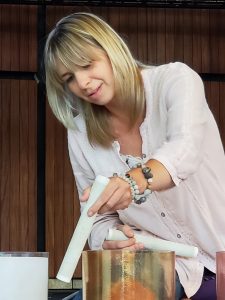Winter depression is common but it doesn’t have to be crippling
By Eric Valentine

More than 3 million Americans suffer from it, and in long-winter areas like the Wood River Valley, prevalence tends to be higher. But are enough of us talking about it? The topic: Seasonal Affective Disorder (SAD), commonly called seasonal depression, casually called the winter blues.
Just within the last week, two suicides were reported to The Weekly Sun. And as the snowfall begins to steady and the sun sets earlier and rises later, the condition the National Institute of Mental Health says is linked to everything from your sex to your serotonin levels only figures to play a bigger factor in people’s lives these next few months.
There is help.
St. Luke’s Mental Health Services clinic at 1450 Aviation Drive, Suite 202, in Hailey, offers free mental health screenings. Registration is required, and typically the session would involve a basic interview to determine whether a referral to a specialist is needed.
But there are other options out there, too, as well as alternative ways of looking at what seasonal depression even is. Enter practitioners like Bridgette Aldrich, a restorative energetic healer based in the Valley.
“When I’m sad, I revel in it,” said Aldrich, who views depression as a natural and temporary reality where lessons can be learned. “There’s nothing shameful about being sad. When we feel ourselves breaking down, we can actually be preparing to break open.”
Aldrich was a presenter at this year’s Sun Valley Wellness Festival. Among other modalities, she uses “sound baths” to help her clients cope. Sound baths involve using bowls to create a variety of sounds that fill a room and resonate with mind and body.
“It’s easy to go against what nature is telling us in winter. Nature is slowing down, but our schedules and the holidays can bring us out of alignment with that,” Aldrich explained.
So, in addition to sound baths, Aldrich recommends people find a restful form of yoga to practice and a creative outlet that allows one to express pent-up thoughts and feelings rather than repress them until spring.
For Dr. Jan Sommer, a Valley-based psychologist and Ph.D. with 30 years of experience, her more clinical, therapeutic approach is no less ironic in some ways.
“Winter weather is understood to be one of the causes, but getting out into that weather is a common solution for it,” Sommer.
Sommer said you’re far more likely to go into a depression when you stay inside your home compared to being outside doing winter sports and other outdoor activities. However, if you are stuck inside, watching TV on the couch, Sommer suggests watching movies set in summer or in warm-weather areas.
“If you can’t bring the warmth and the light to you, you can still sometimes jolly your brain a little,” Sommer said.
Although SAD is real, Sommer cautions against the thinking that a person’s depression is caused merely by the season. Depression is complex, she explained, and usually by the time someone comes to see her, there are a number of factors at play.
“In my business, sadly, there’s never any problem of supply and demand,” Sommer said.
Attributes that may increase your risk of SAD include:
- Being female. SAD is diagnosed four times more often in women than men.
- Being young. Younger adults have a higher risk of SAD than older adults. SAD has been reported even in children and teens.
- Living far from the equator. SAD is more frequent in people who live far north or south of the equator. For example, 1 percent of those who live in Florida and 9 percent of those who live in New England or Alaska suffer from SAD.
Source: National Institute of Mental Health


